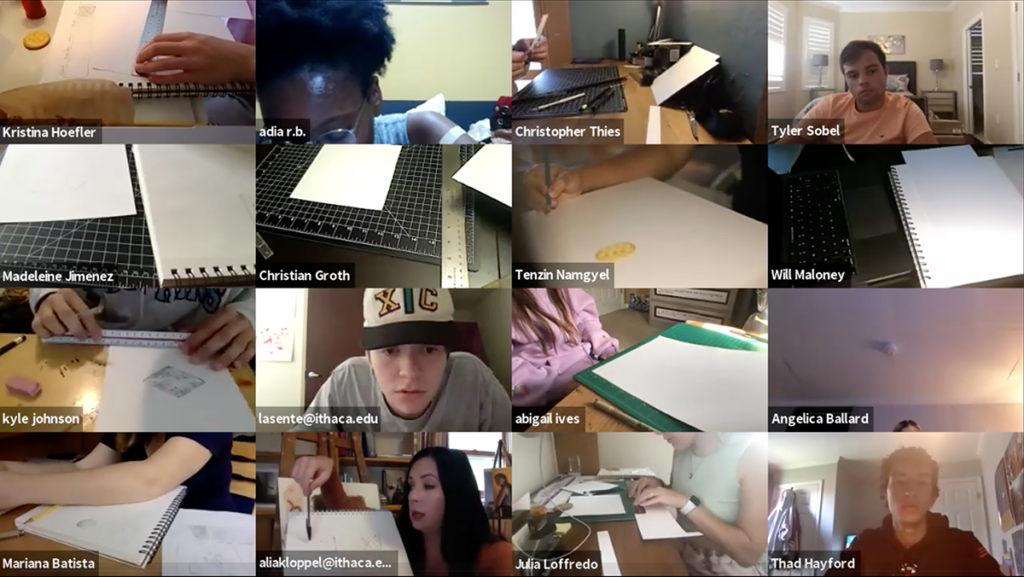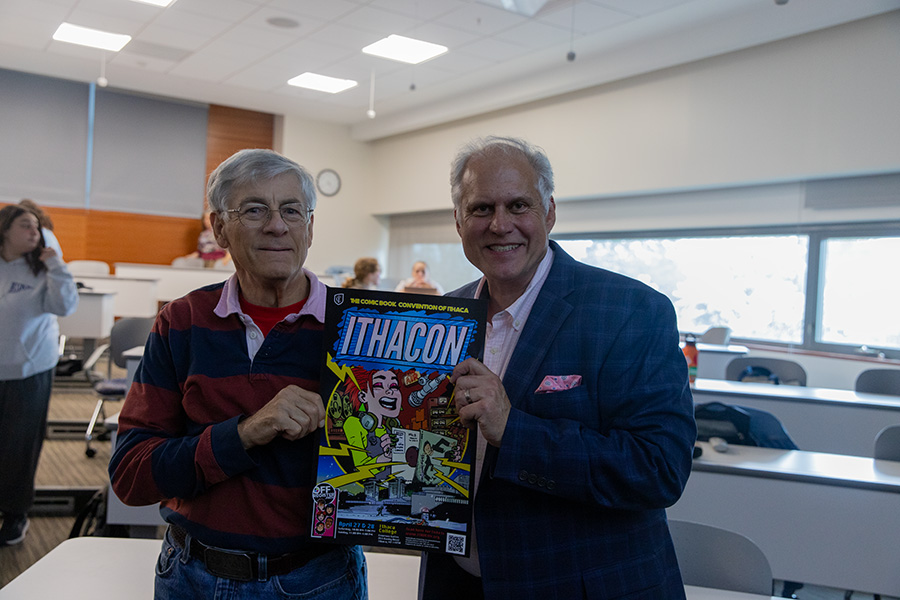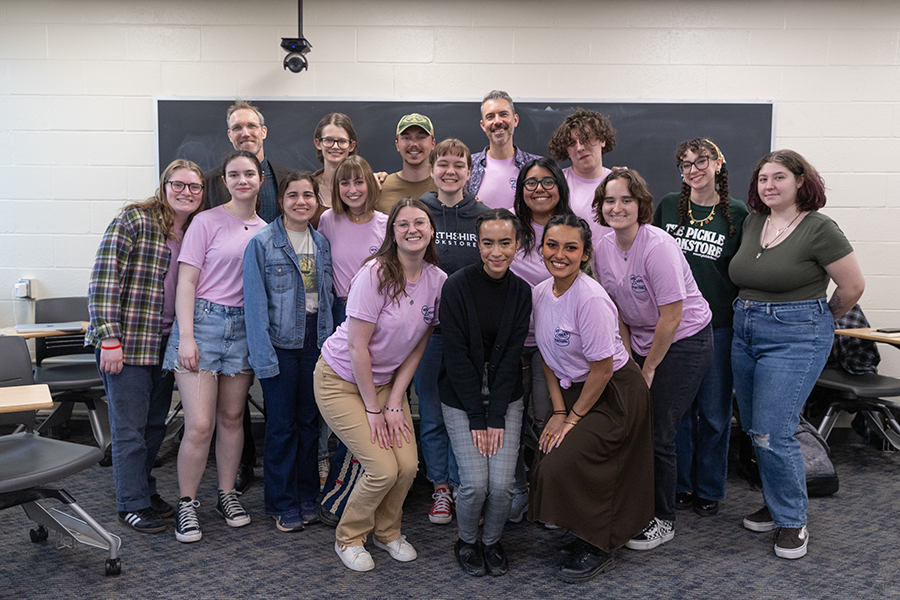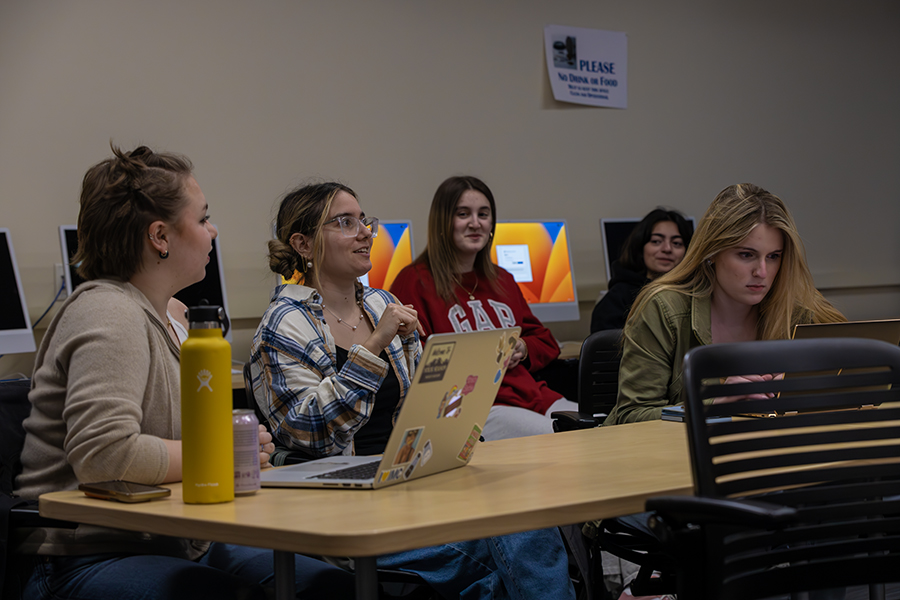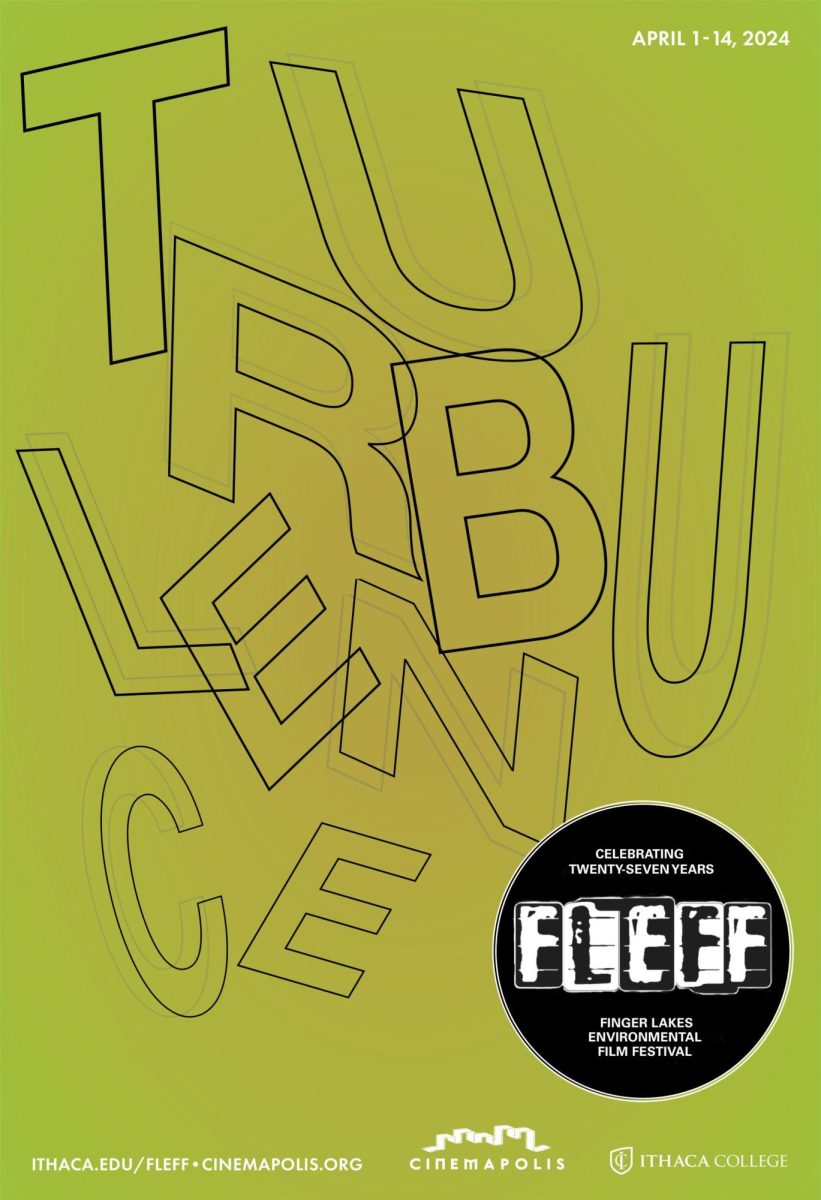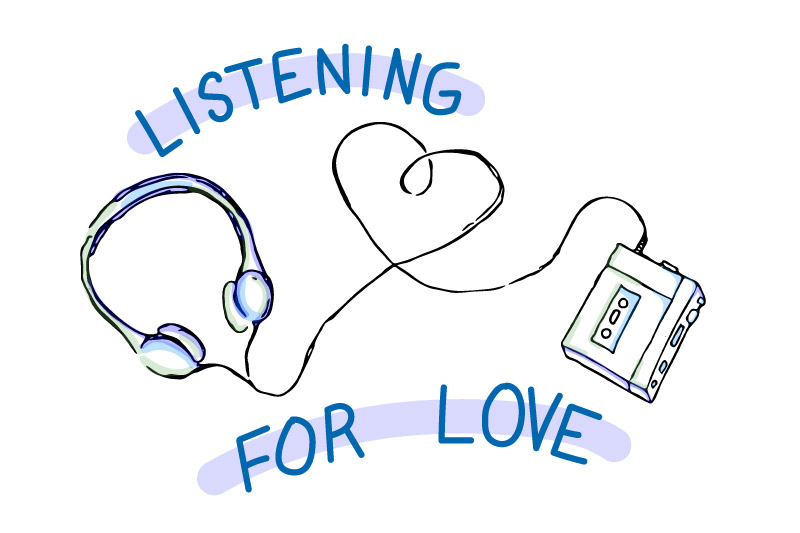With seats spread across the classroom, a projector displaying the faces of online classmates and a professor with a laser pointer, the usual hands-on nature of art classes at Ithaca College looks different this year compared to the past.
With the transition to hybrid classes, art professors have to balance teaching students on Zoom and in person while abiding by COVID-19 safety guidelines. Due to the nature of art as a hands-on activity, teachers have had to get creative with their teaching, utilizing laser pointers and Zoom’s features to provide students with feedback.
For Spring 2021, there are 29 classes in the Department of Art being offered, not counting independent study courses. Of them, 13 are being taught exclusively online, while 16 are being taught as hybrid classes, according to HomerConnect.
Dara Engler, associate professor and chair of the Department of Art, teaches three hybrid classes this semester — Intermediate Drawing: The Figure, Intermediate Painting: The New Narrative and Advanced Painting: The New Narrative. To offer the best possible learning experience, Engler has had to form creative teaching methods. To comment on the students’ work, Engler has students taking classes on Zoom take photos of their artwork and screen–share it to the class. She then uses Zoom’s annotate feature to draw on top of the students’ artwork while making comments to the class.
“I think the biggest difference is that previously, you could sit where [the students] were sitting, see exactly what they were seeing, make suggestions on their drawings, watch how they were using their materials and not only give feedback on the drawings, but you could give feedback on their material use and their process instead of guessing by what you’re seeing,” Engler said.
For students taking her classes in person, Engler said she uses a laser pointer to point at the part of the students’ work she is talking about so that she and her students can remain socially distant. However, the hybrid classes have disproportionately affected the way students on Zoom and students in person perceive art.
“It is much more challenging to teach hybrid than it is remote,” Engler said. “It’s wonderful that in figure drawing, students can work from a live model, but I have maybe four or five students in the room with me and then I have ten of them on the computer. It’s much more complicated to toggle between microphones and cameras, and the students at home are obviously working from two–dimensional images of the figure.”
Junior Fatima David, an art major who takes Engler’s Advanced Painting class from home, said the pandemic has changed the learning experience.
“To not have the feedback while working and instead have to learn how to take pictures, good pictures, with the phone and get feedback that way … was just odd,” David said.
David said hybrid teaching presents multiple problems for students getting their work critiqued. People on Zoom and in person often talk over each other. Not being able to see the physical artwork being discussed at the same time creates a disconnect, David said.
Patricia Hunsinger, lecturer in the Department of Art, teaches two hybrid classes — Introduction to Print Media: Book Arts and Two-Dimensional Design. In order to make sure that students on Zoom and in person have the same resources, Hunsinger said she had her students order art kits to be mailed to them. For her Two-Dimensional Design class, the kit contained paper, scissors, pencils, cutting mats, thread and needles. For her printmaking class, the kit contained intaglio ink, screen–print ink, 9-by–12 sheets of plastic, a rubber roller and a cutting mat.
“It has to be equitable, otherwise that’s not fair,” Hunsinger said. “I’m teaching printmaking processes so that the students can also do the same processes at home at their own kitchen sink.”
Junior Jonah Robertson, a film, photography and visual arts major, is taking Introduction to Sculpture in person with Bill Hastings, assistant professor in the Department of Art. The tables that Robertson sits at are 6 or 7 feet long, with students sitting at the opposite ends. When Robertson gets materials for his sculptures before he sits down, he tries to get everything he will need for the whole class so he won’t have to walk across the room again and come close to fellow students.
Robertson said the hybrid experience is awkward at times, as much of the time he spends in class is working on projects.
“Classes are kind of off-putting,” Robertson said. “A lot of the class is work time and getting feedback, so you’re just sitting by the computer, watching everyone make their sculpture while you do yours at the table.”


